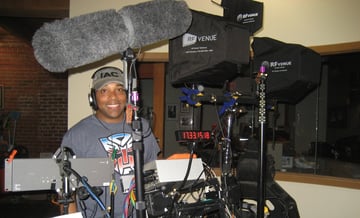- Products
- All Products
- RF PA Extension Kit
- Wireless Microphone Upgrade Packs
- In-Ear Monitor Upgrade Packs
- Wireless Microphone Antennas
- Wireless In-Ear Monitor Antennas
- Antenna Distribution for Microphones
- Antenna Combiners for In-Ear Monitors
- Multi-Zone Antenna Combiners
- Spectrum Tools
- Accessories, Cables and Parts
- Solutions by Venue
- Resources & Training
- Performance Tools
- About Us
July 17, 2015
Cross-Industry Coalition Brings Incentive Auction Rulemaking to Screeching Halt Over Concerns About the Duplex Gap
Written by: Alex Milne

Yesterday the FCC was—at long last—set to rule on the final rules for the incentive auctions. The incentive auctions have been delayed innumerable times, and the Commission, at least the majority of them, were no doubt on the very edge of their seats to hear that gavel drop.
Yet, when a new presentation of clearing scenarios (how stations that are not sold will be repacked into remaining spectrum) was released on the 10th alongside a Sunshine waiver, lawyers throughout Washington representing groups that will rely on unlicensed and other uses of the new duplex gap leapt to their feet. Calls were made, pens burst at the nib, and the rulemaking has now been postponed until August 6th.
Though displeased, Chairman Wheeler could not ignore the letter from the Republican Chairs of the House Committee on Energy and Commerce, Fred Upton and Greg Walden, he found upon his desk this Tuesday, on top of, among other things, a scathing letter from the NAB, and a rare and persuasive cross-industry letter from the following groups:
- National Association of Broadcasters
- Radio & Television Digital News Association
- Microsoft Corporation
- Utilities Telecom Council
- Wireless Internet Service Providers Association
- (WISPA) Engine Advocacy
- Spectrum Bridge
- Consumers Union
- Consumer Federation of America
- Open Technology Institute at New America
- Public Knowledge
- Free Press
- Common Cause
- Benton Foundation
- Rural Broadband Policy Group
- Institute for Local Self-Reliance
- Access Humboldt
- Akaku Maui Community Media
In their letter, they said this:
Placing television stations in the duplex gap will foreclose the use of the duplex gap for both unlicensed users and licensed wireless microphones in important markets. This would significantly undercut the public interest benefits associated with the auction the Commission identified in its May 2014 Framework Order by preventing both mobile news reporting and deployment of low-band unlicensed spectrum in the places where low-band spectrum is most needed to effectively provide these services.
We have a very unusual alliance between diverse and sometimes opposing groups (a political unicorn?) who all want to use the duplex gap for different things, but most pressingly, wireless microphones and white space devices (WSDs).
Over a long period of time they have been assured by the FCC in various ways that they can look forward to using the duplex gap nationwide for these services.
Recently, there was chatter that the FCC was planning on putting TV stations into the duplex gap anyways, in crowded markets, because doing so is an easy way to reduce impairment.
“Impairment” is post-auction interference or coverage area conflict between two or more stations that decide to stay on the air in the same area. It is very, very, verrrrrrrrry complicated to figure out how to repack TV stations into remaining spectrum without stepping on anyone’s toes. A lot of sophisticated work has been done on this tremendous problem.
On Friday the FCC released two clearing scenarios that included many stations being placed into the duplex gap, in order to reduce impairment.
To the above groups, that information seemed to be a punch below the belt that compelled them to move. The groups who want the duplex gap cried foul because the about-face was released far too soon to the Open Meeting to give it serious consideration and debate.
I'll leave you with an excerpt from a letter the NAB’s Rick Kaplan sent to the Commission Secretary on Friday:
It has yet to be explained exactly why the Commission must hastily roll back its commitment to provide 4 MHz nationwide for licensed wireless microphone operations in the 600 MHz band. At no point in the incentive auction proceeding has the Commission indicated that it was imperative to place TV stations in the duplex gap. If anything, a general consensus had emerged that it would be a mistake to place stations there.
*Leading image courtesy "Sam".
Alex Milne
Alex Milne was Product Marketing Manager and Digital Marketing Manager for RF Venue, and a writer for the RF Venue Blog, from 2014-2017. He is founder and CEO of Terraband, Inc., a networking and ICT infrastructure company based in Brooklyn, NY., and blogs on spectrum management, and other topics where technology,...
More from the blog

COMBINE4 Transmitter Combiner
Using an Antenna Distributor as a Combiner Has Consequences
3 min read
| December 14, 2014
Read More

CP Beam Antenna
Dr. Marlowe Taylor Mixes Katherine Heigl Indie Comedy With RF Venue Antennas
4 min read
| December 14, 2014
Read More

Knowledge Guides
Common Sources of Interference
4 min read
| December 14, 2014
Read More
Subscribe to email updates
Stay up-to-date on what's happening at this blog and get additional content about the benefits of subscribing.
